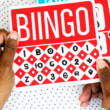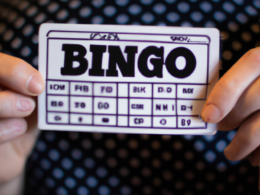Bingo is a popular casino game in India that is typically played with small balls. The object of the game is to make as many balls as possible fall into a designated spot on the table.
Bingo is also known by various other names in different parts of the world, such as keno, pai gow, and lotto. In India, it is most commonly known as bingo.
The origins of bingo are unknown, but it likely originated in China or Japan. Bingo first became popular in Europe in the 1800s, and eventually made its way to India.
In India, bingo is most commonly played at casinos and race tracks. It is also popular among social clubs and religious organizations.
The rules of bingo vary from country to country, but the basic premise remains the same: players try to make as many balls fall into a designated area on the table. The size of the balls used in bingo also varies from country to country, with some countries using smaller balls than others.
The goal of bingo is to cover as many squares on the table as possible with your balls before someone else does.
In India, bingo is typically played with small balls that are either red or green. The red balls are used for numbers 1 through 6, while the green balls are used for numbers 7 through 12. Players usually start by drawing a number from a bowl or drum (or sometimes cards), and then placing that number of small balls onto the corresponding square on the table. Next, players either hit their balls with a rubber mallet or use their hands to try to make them fall into one of the numbered squares on the table.
If a player makes a ball fall into a numbered square that already has a ball there, they can replace that ball with one from their own pool of balls (or take another turn). When all players have finished playing their turns, the numbers on the squares on the table are tallied up to see who has won the game.
In general, Indian bingo is similar to American bingo in that it uses small balls and is played with a number of participants divided into several teams (usually two or three). There are also some differences between Indian and American bingo that come down to cultural preferences.
For example, American players typically use paper cards while Indian players use small tokens made out of plastic or wood. Indian players also tend to play for smaller amounts of money than American players do (usually around $2 per game), which may account for why Indian bingo is less popular overall than American bingo.
Overall, while there are many variations of bingo across different parts of the world, at its core it remains an ancient game that dates back centuries.








